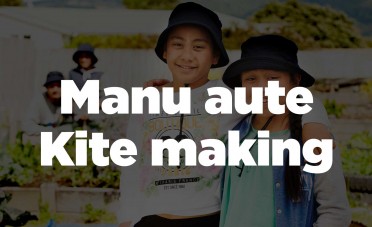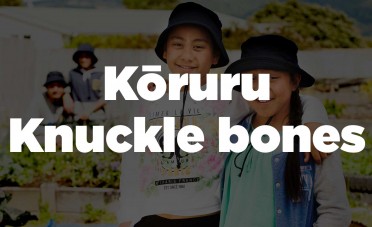Poutoti Stilts
Try walking on poutoti (stilts).
Exploring te ao kori — Activity collections
This resource is part of a series within the Exploring te ao kori activity collections called Ngā mahi a te rēhia | Games and pastimes.

Intended outcomes
Ākonga:
- access and use information to make safe choices when undertaking poutoti (stilts) activities
- demonstrate consistency and control in poutoti activities.
Suggested approach
Ākonga make poutoti from wood and identify possible dangers when using poutoti by themselves and with others. They identify ways they can avoid hurting themselves in the case of a fall forwards, backwards or sideways.
Ākonga are given opportunities to develop safe landing skills by practicing with gym equipment, playground equipment, and using the poutoti. Ākonga should be able to land reasonably safely in any direction when using the poutoti.
Ākonga work in pairs with one pair of poutoti. One person mounts the poutoti with the aid of the partner who is holding the poutoti from behind and attempts to walk with hands-on support from the partner, until they can walk unaided. Ākonga can challenge their partner to see if they can walk 10 metres unaided.
Kaiako can discuss with ākonga other suitable stilt activities, such as creating a stilt sequence to music, and the safety issues involved.
Ākonga reflect and discuss in their pairs what they found easy, difficult, scary, how their partner helped them and how this felt, and the concept of trust in this activity.
Complete the activity with a class challenge; either a relay or a game involving the use of the poutoti.
Ākonga look at photos of other cultures that use stilts as part of their dance tradition. For example, the African tribes of the Ivory Coast use stilts up to two metres high and cut from the banana tree because of its strength, lightness, and flexibility. The stilt walkers wear long trousers to cover their stilts, and they perform dances to the beat of small drums and shake rattles. Rapid steps, crossing of legs, leaps, and pirouettes are carried out to the point of overbalancing.
The symbolism of stilt dancing is humankind overcoming earthly obstacles.
A young man demonstrating how to walk on poutoti
A young man demonstrating how to walk on poutoti


